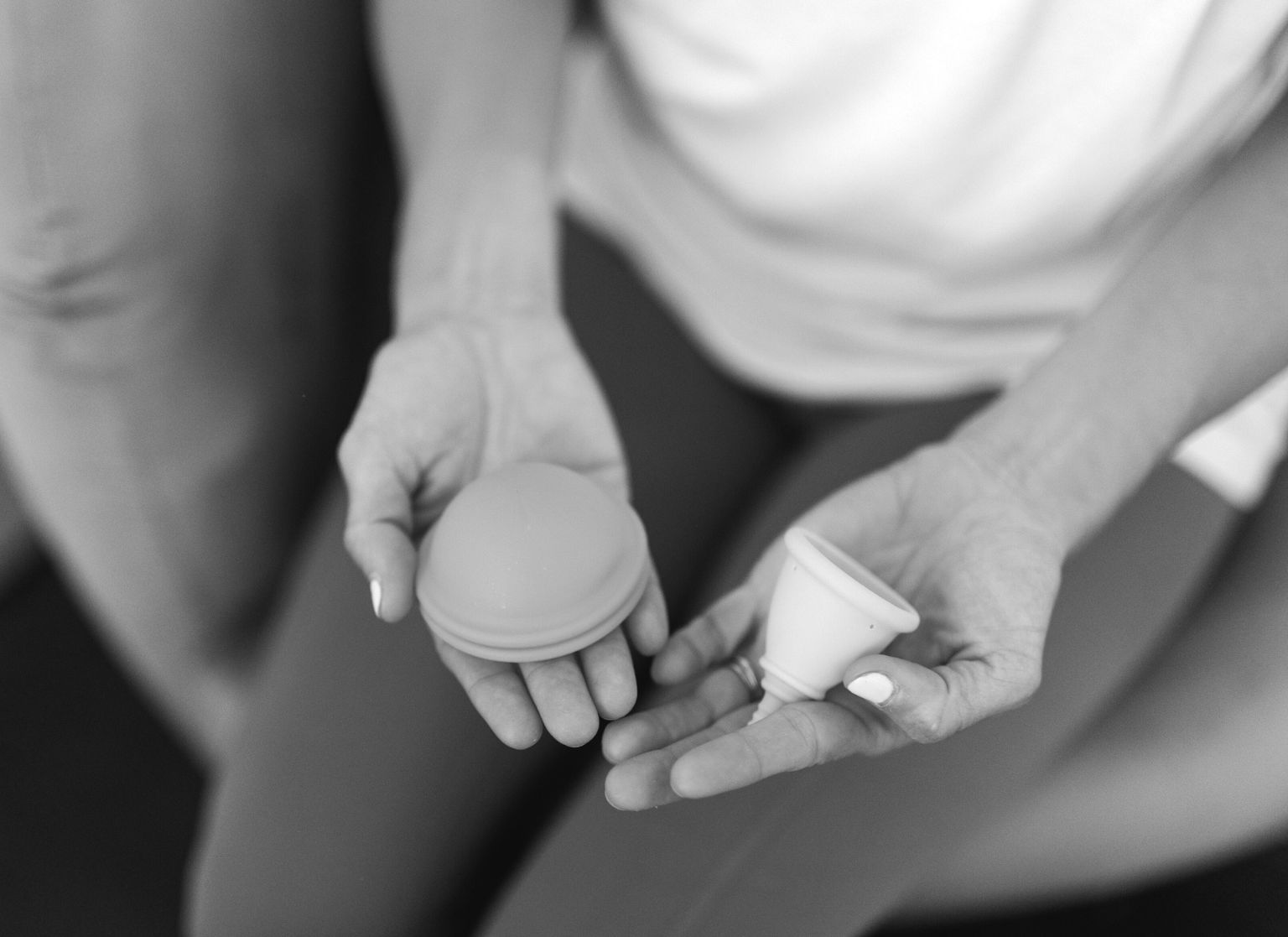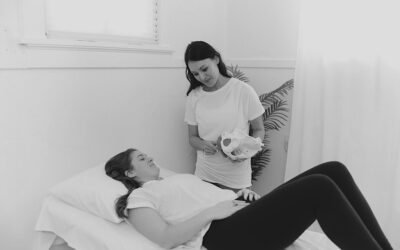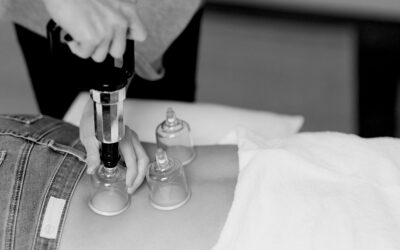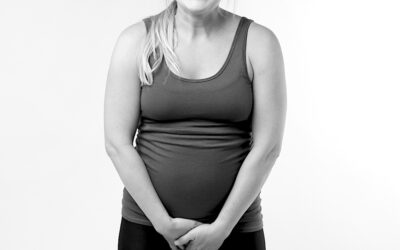I was ten years old the day I got my first period. My mom handed me a maxi-pad and a book about menstrual cycles and said, “Let me know if you have questions.” And that was it. No discussion about period care, no tips, and I used the same menstrual products as my mom.
As a pelvic health physical therapist for the past 15 years, I have become much more well-informed about my body, menses, and overall pelvic health. Here are some pelvic health tips for your period that I am super glad I know and think all menstruators should know.
What to do for Pelvic Floor Pain During Periods
Pass the peas, please!! Menstrual cramps can be the worst. If you experience pain in your pelvic floor during your period, follow the steps below for pain relief.
Step 1: Lie on your back and place your feet against the wall. This helps decrease the pressure and blood flow.
Step 2: Place a bag of frozen peas on your vagina. The peas are an inexpensive ice pack that will help ease that swollen feeling.
Step 3: Place a pillow under your butt. This lift in your hips helps “decompress” your pelvic floor. This position is ideal for when on your period, especially when gravity has been taking a toll at the end of the day.
You can use this technique for 20 minutes daily. For added cramp relief, try drinking herbal tea, putting a warm compress over your vagina, or taking pain relieving medicine.
Stretches for Pelvic Floor Pain During Periods
For natural relief, try these exercises below to help with period pain when the time of the month comes.
Cat-Cow Pose
Get on all fours. Keep your hands shoulder-width apart and your knees directly below your hips.
Inhale deeply and curve your lower back, bringing your head up and tilting your pelvis. Exhale deeply and bring your abdomen in, arching your spine and bringing your head and pelvis down. Repeat the stretch.
Child’s pose
Sit back on your heels with your toes together. Touch your big toes together and spread your knees wider than your hips.
Rock your hips backward onto your heels and stretch your arms forward. Your forehead should rest on the floor and your back should be straight.
Exhale and move your torso closer to the ground. Hold the pose for 5-10 breaths.
Period Tips for School and Work
If the pain is intense, try to breathe through the cramps. Diaphragmatic breathing helps relax your mind and pelvic floor, which can help ease the pain.
If your muscles are tight, start with your breath. Inhale with belly puffs and exhale with belly falls.
Practice daily and often. This is a great trick you can do at school or work!
Your First Postpartum Period
Your body undergoes many changes after giving birth, and the hormonal rollercoaster is no joke. After giving birth, you normally won’t get your period for 45-60 days. This time is even longer if you are breastfeeding or lactating.
This is because prolactin, the hormone that aids breast milk production, works inversely with estrogen. If you are lactating, we want your prolactin to be high. This means estrogen may be low – leading to a delayed cycle start, increased vaginal dryness, and decreased sex drive.
Using a water-based lubricant for sex and working with a pelvic floor physical therapist can help. Your menstrual cycle should return as you get further from birth and your lactation production decreases.
In addition, your first postpartum period will likely be heavy. Like, really heavy. You may consider using period panties as a backup throughout the day or night. If you’re not sure if your post-birth periods are normal, talk to your doctor or contact a pelvic floor expert.
Feelings of Pressure or Heaviness
A heavy flow or increased pelvic floor laxity may lead to pressure or heaviness in the vagina. In addition, all the blood flow may make you feel achy, especially in standing or at the end of the day.
This is where a “vagina support” known as a V2 support can come in handy. This helps decrease heaviness/pressure in your vag during your period. Wear it over your underwear and under your clothes.
The 411 on Period Products
Not all period products are created equally. I started using tampons since I first got my period, and a lot has changed! I often hear of folks using maxi pads for urinary leakage or incontinence pads as period panti-liners.
There are so many options now – even for those who prefer a minimally invasive solution! Menstrual cups, discs, tampons with or without applicators, pads, liners, period panties, and even free-bleeding.
Incontinence Pads
Incontinence pads hold more fluid and keep moisture away from your skin, keeping it dry and preventing skin breakdown. If you are working with some leaks, you have incontinence undies, pads, liners, and internal and external prolapse supports. And if you have sensitive skin, as I do, bleach-free and organic cotton products are widely available.
Menstrual Cups
Menstrual cups are a little cup you insert into your vagina which goes around your cervix to collect fluid. They’re a great alternative to tampons. The tricky part is getting them in and out.
To insert the cup, sit on the toilet with your feet on a squatty potty. Take a deep breath to relax the pelvic floor muscles and insert the cup into the vaginal canal. Once inserted, the cup forms a suction and collects fluids throughout the day. To remove, insert a finger and squeeze it to release the suction and pull it out.
Wash it between use and, at the end of every cycle, boil it in water to sterilize it.
If you aren’t sure which cup is best for you, check out Put A Cup In It! This is my all-time favorite resource with a fit-finder quiz to help you select the best cup.
Tampons & Pads
My fave menstrual product brands include the Diva Cup, Cora Women, Lola, and SheThinx.
Lola tampons and pantyliners are organic, chemical-free products. They ship to your home and come in custom packs, so you can pick how many light, regular, or super plus you want each month. Determining what works best for you may take trial and error.
Extreme Pelvic Floor Pain during Periods
Pelvic floor pain during periods is not normal! You should be able to control menstrual period pain with over-the-counter pain relievers, and it should not keep you from daily activities.
If your periods are painful and cause you to miss school or work, ask your doctor if you have endometriosis.
Endometriosis can be a scary and sometimes debilitating diagnosis that affects roughly 10% of menstruating women. Unfortunately, many women have endometriosis and have pain for years before they get an official diagnosis.
How Pelvic Floor PT can Help with Painful Periods
You may benefit from pelvic floor physical therapy if:
- Your pelvic floor muscles are too weak OR too tense
- Inserting tampons is painful
- You feel like your body is pushing out your tampon
With PF therapy, we can check whether you need to work on strengthening or relaxing.
Pelvic PT can help not just with the aches and pain of periods, but pain that occurs with any underlying conditions as well. Check in with a pelvic floor physical therapist if you experience heaviness or weakness in the pelvic floor area!
The V-Hive quiz is a great place to start if you’re not sure where to begin on your pelvic floor healing journey! Answer a few short simple questions to determine if your pelvic floor could benefit from strengthening, relaxation, or both.





